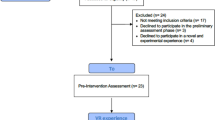Abstract
Virtual reality (VR) has become mature enough to be successfully used in clinical applications such as exposure therapy, pain distraction, and neuropsychological assessment. However, we now need to go beyond the outcome data from this research and conduct the detailed scientific investigations required to better understand what factors influence why VR works (or doesn’t) in these types of clinical applications. This knowledge is required to guide the development of VR applications in the key areas of education, training, and rehabilitation and to further evolve existing VR approaches. One of the primary assets obtained with the use of VR is the ability to simulate the complexity of real world environments, within which human performance can be tested and trained. But this asset comes with a price in terms of the capture, quantification and analysis of large, multivariate and concurrent data sources that reflect the naturalistic behavioral interaction that is afforded in a virtual world. As well, while achieving realism has been a main goal in making convincing VR environments, just what constitutes realism and how much is needed is still an open question situated firmly in the research domain. Just as in real “reality,” such factors in virtual reality are complex and multivariate, and the understanding of this complexity presents exceptional challenges to the VR researcher. For certain research questions, good behavioral science often requires consistent delivery of stimuli within tightly controlled lab-based experimental conditions. However, for other important research questions we do not want to constrain naturalistic behavior and limit VR’s ability to replicate real world conditions, simply because it is easier to study human performance with traditional lab-based methodologies. By doing so we may compromise the very qualities that comprise VR’s unique capacity to mimic the experiences and challenges that exist in everyday life. What is really needed to address scientific questions that require natural exploration of a simulated environment are more usable and robust tools to instrument, organize, and visualize the complex data generated by measurements of participant behaviors within a virtual world. This paper briefly describes the rationale and methodology of an initial study in an ongoing research program that aims to investigate human performance within a virtual environment where unconstrained “free will” exploratory behavior is essential to research questions that involve the relationships between physiology, emotion, and memory. After a discussion of the research protocol and the types of data that were collected, we describe a novel tool that was borne from our need to more efficiently capture, manage, and explore the complex data that was generated in this research. An example of a research participant’s annotated display from this data management and visualization tool is then presented. It is our view that this tool provides the capacity to better visualize and understand the complex data relationships that may arise in VR research that investigates naturalistic free will behavior and its impact on other human performance variables.
Similar content being viewed by others
References
Damasio, A. R. (1994). Descartes error: Emotion, reason, and the human brain. New York: G. P. Putnam’s Sons.
Dolan, R. J. (2002). Emotion, cognition and behavior. Science, 298, 1191–1194.
Glantz, K., Rizzo, A. A., & Graap, K. (2003). Virtual reality for psychotherapy: Current reality and future possibilities. Psychotherapy: Theory, Research, Practice, Training, 40(1/2), 55–67.
Hoshi, Y., Chen, S.-J., & Tamura, M. (2001). Spatiotemporal imaging of human brain activity by functional near-infrared spectroscopy. American Laboratory Journal, 33(6), 36–39.
Jennings, J. R., Karmarck, T., Stewart, C., Eddy, M., & Johnson, P. (1992). Alternate cardiovascular baseline assessment techniques: Vanilla or resting baseline. Psychophysiology, 29, 742–750.
Kennedy, R. S., Lane, N. E., Berbaum, K. S., & Lilienthal, M. G. (1993). A simulator sickness questionnaire (SSQ): A new method for quantifying simulator sickness. International Journal of Aviation Psychology, 3(3), 203–220.
Lane, R. D., Chua, P. M.-L., & Dolan, R. J. (1999). Common effects of emotional valence, arousal and attention on neural activation during visual processing of pictures, Neuropsychologia, 37(9), 989–997.
Morie, J. F. (2002). Coercive narrative, motivation and role playing in virtual worlds. In Proceedings of the 6th World Multiconference on Systemics, Cybernetics and Informatics: Vol. XII. Industrial systems and engineering II (pp. 473–479). July 2002.
Rizzo, A. A., & Kim, G. (2005). A SWOT analysis of the field of Virtual Rehabilitation and Therapy. Presence: Teleoperators and Virtual Environments, 14(2), 1–28.
Rizzo, A. A., Pair, J., McNerney, P. J., Eastlund, E., Manson, B., Gratch, J., et al. (2005). Design and development of a VR therapy application for Iraq war veterans with PTSD. In J. D. Westwood et al. (Eds.), Technology and informatics (pp. 407–413). 111. Amsterdam, NL: IOS Press.
Rolls, E. T. (1999). The brain and emotion. Oxford: Oxford University Press.
Schacter, D. L., & Buckner, R. L. (1998). Priming and the brain. Neuron, 20, 185–195.
Tulving, E., & Schacter, D. L. (1990). Priming and human memory systems. Science, 247, 301–306.
Usoh, M., Catena, E., Arman, S., & Slater, M. (2000). Using presence questionnaires in reality. Presence: Teleoperators and Virtual Environments, 9(5), 497–503.
Witmer, B. G., & Singer, M. J. (1998). Measuring presence in virtual environments: A presence questionnaire. Presence: Teleoperators and Virtual Environments, 7(3), 225–240.
Author information
Authors and Affiliations
Corresponding author
Rights and permissions
About this article
Cite this article
Morie, J.F., Iyer, K., Luigi, DP. et al. Development of a Data Management Tool for Investigating Multivariate Space and Free Will Experiences in Virtual Reality. Appl Psychophysiol Biofeedback 30, 319–331 (2005). https://doi.org/10.1007/s10484-005-6386-y
Issue Date:
DOI: https://doi.org/10.1007/s10484-005-6386-y




